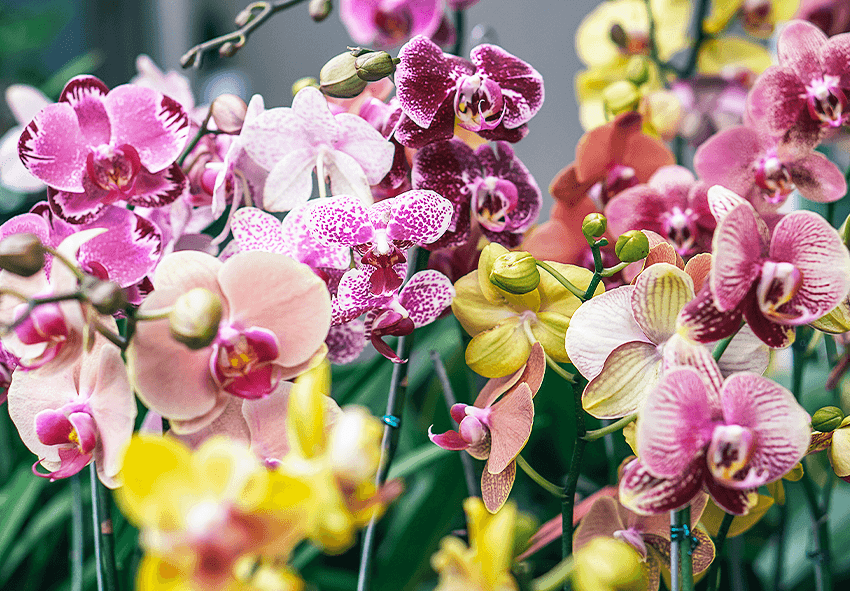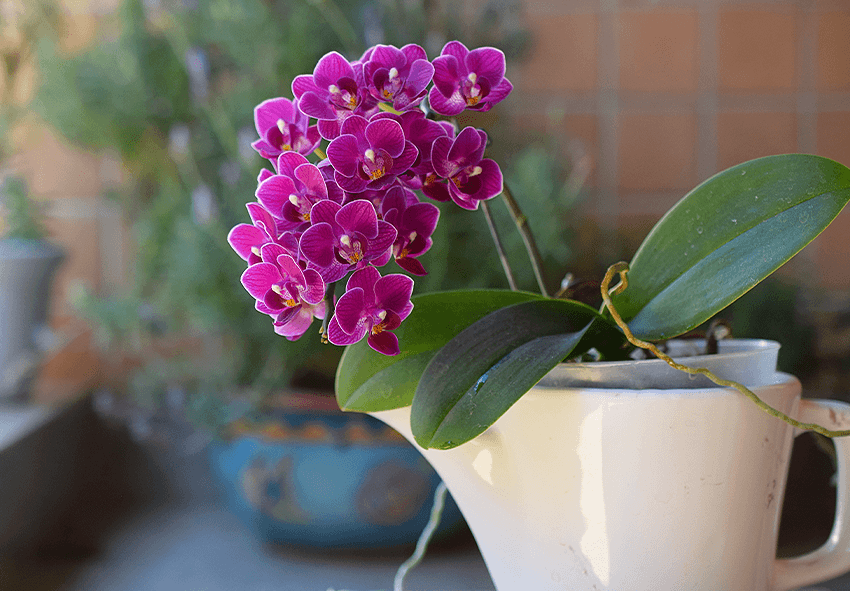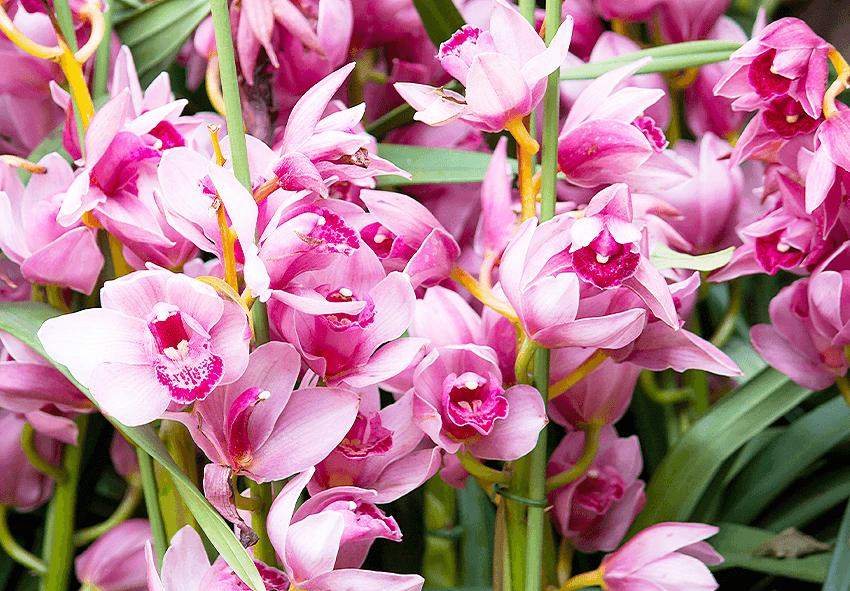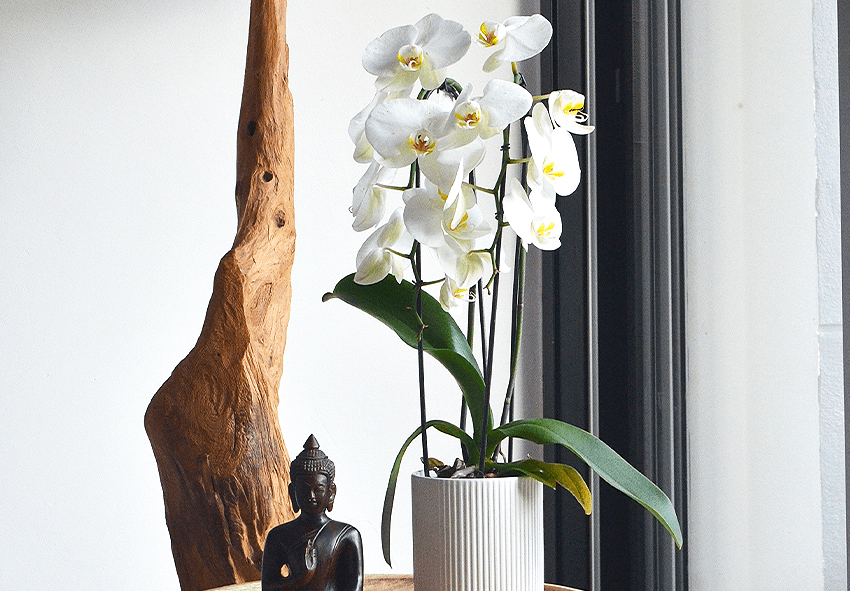How Often Do Orchids Bloom? (and How Can I Make it Happen?)
Orchids are one of the most beautiful and exotic plants you can grow at home. They come in a variety of colors, sizes, and shapes, and their blooms can last for weeks or even months. However, one of the most common questions people ask when they first start growing orchids is, “how often do they bloom?”
The frequency of blooming for orchids can vary depending on the specific type of orchid and its growing conditions. Some orchids may bloom once a year, while others may bloom several times a year or continuously.

To encourage your orchid to bloom, you should provide it with the appropriate growing conditions. Here are some tips to help you:
- Lighting: Orchids typically need bright, indirect light to bloom. Place your orchid in a location where it will receive plenty of light but avoid direct sunlight, which can damage the plant.
- Temperature: Most orchids prefer daytime temperatures between 70 and 80 degrees Fahrenheit and nighttime temperatures between 60 and 70 degrees Fahrenheit. Make sure to keep your orchid away from cold drafts or excessively hot temperatures.
- Humidity: Orchids thrive in humid environments. If your home is dry, consider using a humidifier or placing a tray of water near the plant to increase the humidity.
- Watering: Orchids should be watered regularly but not overwatered. Typically, once a week is enough, but you should adjust based on the specific type of orchid and its growing conditions.
- Fertilizer: Orchids benefit from regular fertilization during the growing season. Use a fertilizer formulated specifically for orchids, and follow the instructions carefully.
By providing your orchid with the right growing conditions, you can encourage it to bloom regularly and enjoy its beautiful flowers.
How Often Do Phalaenopsis Orchids Bloom?
Phalaenopsis orchids, also known as moth orchids, are some of the most popular orchids to grow indoors. They are relatively easy to care for and bloom for several months at a time. Phalaenopsis orchids typically blossom once a year, but they can bloom more frequently if you provide them with optimal growing conditions.
To encourage your Phalaenopsis orchid to bloom more often, make sure it gets plenty of indirect light and consistent temperatures between 65-75°F. Avoid exposing it to cold drafts or direct sunlight, which can damage the leaves and prevent blooming.
How Often Do Mini Orchids Bloom?

Mini orchids are popular choices for people who want to grow orchids in small spaces, like apartments or offices. These petite plants typically bloom once a year, usually in the late winter or early spring.
To help your mini orchid bloom more frequently, make sure it gets plenty of bright, indirect light and consistent temperatures between 65-75°F. You can also try increasing the humidity around your plant by placing it in a humidity tray or using a room humidifier.
How Long Do Orchids Bloom?
The length of time an orchid blooms depends on the species and growing conditions. Some orchids may only bloom for a few weeks, while others may bloom for several months. In general, orchids have a bloom cycle that lasts a few weeks to several months. This is followed by a rest period before another cycle begins.
Phalaenopsis orchids, popular houseplants, bloom for two to three months. Cattleya orchids may bloom for several weeks, while Dendrobium orchids may blossom for up to three months. Oncidium orchids may have a shorter bloom cycle, lasting only a few weeks.
To ensure your orchid blooms for as long as possible, provide it with proper care, including the right amount of light, water, and fertilizer. After the bloom cycle is over, allow the orchid to rest for a while before encouraging it to bloom again.
Caring for Orchids After Flowering: Tips to Keep Your Orchids Healthy

After your orchid has finished blooming, it’s important to continue caring for it properly to ensure it stays healthy and blooms again in the future. Here are some tips for caring for your orchid after flowering:
- Cut back the flower spike: Once your orchid has finished blooming, cut back the flower spike to just above the node where the first flower bloomed. This will encourage the plant to produce another spike and bloom again in the future.
- Water and fertilize regularly: Orchids need consistent moisture and nutrients to stay healthy, so make sure you water and fertilize your plants regularly. Use a high-quality orchid fertilizer and water your plants when the top inch of soil feels dry to the touch.
Common Pests and Diseases That Affect Orchids
Like any plant, orchids are susceptible to pests and diseases. Here are some common issues to watch out for:
- Spider mites: These tiny pests can suck sap out of your orchid’s leaves, making them turn yellow and dry out. You can treat spider mites by washing your plant with a gentle soap and water solution or using a pesticide specifically formulated for orchids.
- Mealybugs: Mealybugs are small, white insects that infest your orchid’s leaves and stem. They feed on the plant’s sap and can cause wilting and yellowing of the leaves. To get rid of mealybugs, wipe them off with a cotton swab dipped in alcohol. You can also use a pesticide specifically formulated for orchids.
- Root rot: Root rot is a common problem with orchids that are overwatered or planted in soil that doesn’t drain well. It can cause the roots to rot and the plant to wilt and die. To prevent root rot, make sure your orchid is planted in a well-drained orchid mix and water it only when the top inch of soil feels dry to the touch.
How to Make Orchids Bloom Again: Tips and Tricks to Encourage Blooming

If you want your orchid to bloom again, there are several things you can do to encourage it. Here are some tips and tricks to help your orchid bloom again:
Providing the Right Conditions for Your Orchids
Orchids need specific growing conditions in order to bloom again. Here are some key factors to consider:
- Light: Most orchids need bright, indirect light to bloom again. Avoid placing your orchid in direct sunlight, as this can damage the leaves and prevent blooming.
- Temperature: Orchids prefer temperatures between 65-75°F during the day and 55-65°F at night. Avoid exposing your orchid to cold drafts or hot, dry air, as this can damage the leaves and prevent blooming.
- Humidity: Orchids thrive in humid environments, so make sure to keep the air around your plant moist. You can use a humidifier or place your orchid on a humidity tray to increase the humidity.
Fertilizing and Pruning Your Orchids
Proper fertilization and pruning can also help encourage your orchid to bloom again. Here are some tips to keep in mind:
- Fertilize regularly: Orchids need regular fertilization in order to bloom again. Use a high-quality orchid fertilizer and follow the manufacturer’s instructions for application.
- Prune your orchid: After your orchid has finished blooming, cut back the flower spike to just above the node where the first flower bloomed. This will encourage the plant to produce a new spike and bloom again in the future.
By following these tips and tricks, you can help your orchid bloom again and enjoy its beautiful flowers for years to come.
Frequently Asked Questions (FAQs) about Orchid Blooms
1. How often do Holland orchids bloom?
Orchid blooming frequency depends on various factors, including the orchid species, growing conditions, and care. Most orchids bloom once a year, while some, like Phalaenopsis, can bloom several times a year. It’s essential to provide your orchid with proper care, such as adequate light, temperature, and watering. Generally, orchids need a period of rest after blooming, followed by a growth phase before producing flowers again. Patience is key, as some orchids can take a year or more to rebloom. By maintaining a consistent care routine, you can encourage more frequent and healthy blooms from your orchids.
2. Can I order orchids from your online store?
Yes, our online store offers a wide variety of orchids for purchase. We source our orchids from reputable growers, ensuring the highest quality and health. You can browse through our selection of orchids, including popular varieties like Phalaenopsis, Cymbidium, and Dendrobium. Each orchid comes with detailed care instructions, making it easier for you to provide the right environment for your new plant. Whether you’re a beginner or an experienced orchid enthusiast, our online store is a convenient and reliable place to find beautiful orchids to add to your collection.
3. How long do orchid blooms last?
The duration of orchid blooms varies depending on the species and environmental conditions. On average, orchid blooms can last anywhere from a few weeks to several months. Phalaenopsis orchids, for instance, typically have blooms that last 2-3 months. Factors like temperature, humidity, and light can impact bloom longevity. To prolong the lifespan of your orchid’s blooms, maintain consistent care and avoid sudden changes in its environment. Once the blooms fade, consider proper pruning to encourage new growth and future blossoms.
4. Why isn't my orchid blooming?
Several factors could be preventing your orchid from blooming. Common issues include insufficient light, improper watering, and a lack of rest. Orchids require specific conditions to trigger blooming, so ensure your orchid is getting the right amount of light (usually bright, indirect light), consistent moisture (but not overwatering), and a winter rest period for certain species. Repotting or overcrowded roots can also hinder blooming, so check the plant’s root health. Additionally, make sure your orchid is not exposed to drafts or extreme temperature fluctuations, as this can deter flowering.
5. How can I encourage more frequent orchid blooms?
To encourage more frequent orchid blooms, focus on providing optimal care. This includes placing your orchid in the right location with appropriate light levels, maintaining consistent watering and humidity levels, and ensuring proper fertilization during the growing season. Be patient, as orchids have their own natural blooming cycles, and some varieties may take longer to rebloom than others. Pruning spent flower spikes and repotting when necessary can also stimulate new growth and increase the chances of more frequent and robust blooms in the future.
Published: 19.04.2023
